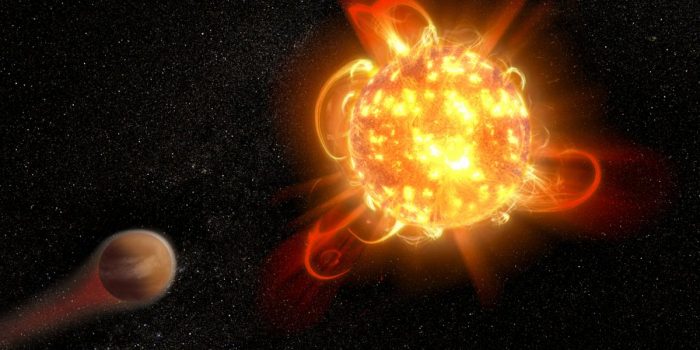From the mysteries of black holes to the explosive power of solar flares, the cosmos is a never-ending source of awe-inspiring phenomena. Our ongoing exploration and study of these celestial events have led to some remarkable discoveries and insights into the workings of the universe. In this context, scientists recently observed one of the most powerful solar flares ever seen in the Orion system, sparking interest and further exploration into these fascinating phenomena.
The recently observed “superflare” in the Orion system could have had catastrophic consequences for any exoplanets in its path. According to a study published in the Astrophysical Journal, this superflare was estimated to be at least ten times more powerful than anything ever observed from our own Sun.
Scientists focused their research on the V1355 Orionis system, which is located 400 light-years away from Earth and consists of two stars that orbit each other. These stars are known to have many sunspots and black planet-sized patches that result from extreme electromagnetic activity. Researchers used data from the Transiting Exoplanet Survey Satellite and the Seimei Telescope in Japan to examine the system at various light wavelengths and obtain the most detailed image of the superflare’s development.
They found that the flare’s beginning was caused by a high-velocity prominence that erupted from one of the stars at 3.5 million km/h, which may have been one of the most significant coronal mass ejections ever seen. This explosion launched trillions of tonnes of electrically charged matter into space at a speed greater than the star’s escape velocity.

Solar flares are sudden and intense bursts of energy and radiation that occur on a star’s surface due to the interaction of its magnetic field with its plasma. While scientists are not entirely sure how or why they form, they can significantly impact space weather, causing geomagnetic storms that affect Earth’s satellite operations, telecommunications, and power grids.
The newly observed superflare could have been accompanied by massive eruptions of charged particles that could destroy any life in their line of fire. However, our planet is too far away to be affected by this gigantic superflare.

Overall, the recent discovery of a superflare in the Orion system highlights the potential danger posed by these powerful astronomical events. While they can significantly impact space weather and cause severe consequences for any planets in their line of fire, the fact that Earth is too far away from this particular superflare is a reassuring thought. Nevertheless, the study underscores the importance of continued research into solar flares and their effects on our planet and the universe at large.
The study is published in the journal Astrophysical Journal.


